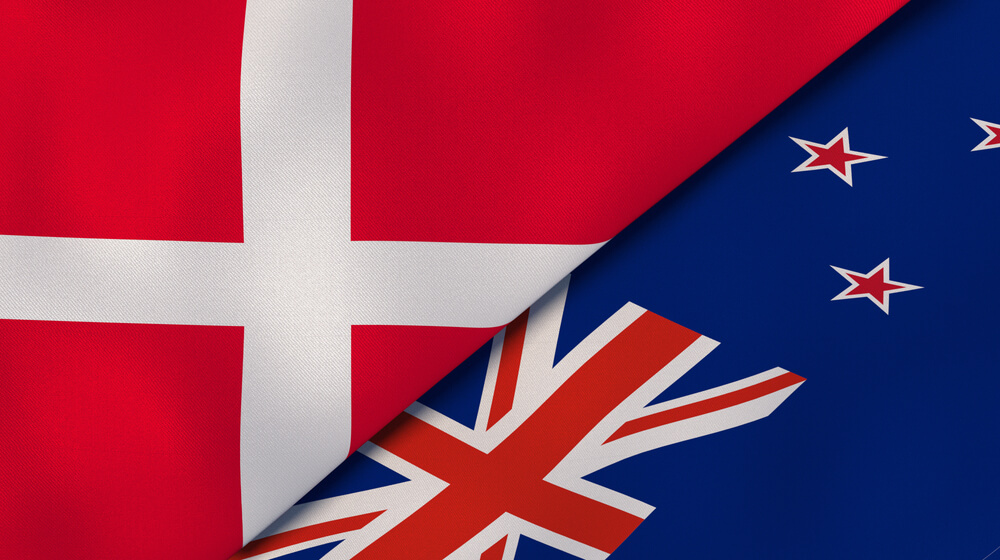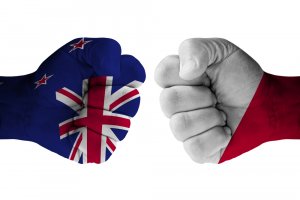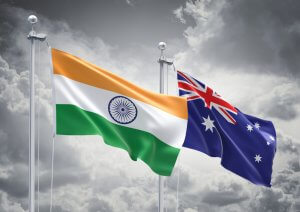Introduction
NZD is the symbol of the New Zealand dollar, and it is the 10th most traded currency in the Foreign Exchange market. It is the official currency of New Zealand and some other countries like Cook Islands, Niue, the Ross Dependency. Whereas DKK stands for Danish Krone, and it is the official currency of Denmark, Greenland, and the Faroe Islands.
The currencies in the Foreign exchange market are traded in pairs. NZD/DKK is the acronym for the New Zealand dollar against the Danish Krone. In this case, the first currency (NZD) is the base currency, and the second (DKK) is the quote currency.
Understanding NZD/DKK
To find the comparative value of one currency in the Forex market, we need another currency to evaluate. If the value of the first(base) currency goes down, the value of the second (quote) currency moves up and vice versa. The market value of NZD/DKK determines the strength of DKK against the NZD. It can be clearly understood as 1 NZD is equal to how much of DKK. So if the exchange price for the pair NZD/DKK is 4.1943, it means we need 4.1943 DKK to buy 1 NZD.
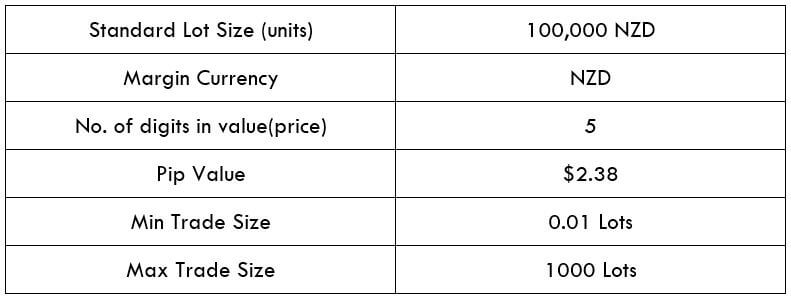
Spread
Forex brokers have two different rates for currency pairs: the bid & ask price. Here the “bid” price at which we can OFFER the base currency, and The “ask” price is at which we can ACQUIRE the base currency. Therefore, the difference between the ask and the bid price is called the spread. Some brokers, instead of charging a split fee for trading, they already have the fees inherent in the spread. Below are the ECN and STP for the pair:
ECN: 15 pips | STP: 20 pips
Fees
When we place any trade, there is some payment/commission we need to pay to the broker. A Fee is simply that payment that we pay to the broker each time we open a position. The fee also fluctuates from the type of broker we use; for instance, there are no charges on STP account models, but a few pips on ECN accounts.
Slippage
The difference between the anticipated and executed price at which the trade is implemented can be termed as Slippage. It can appear at any time but mostly happens when the market is fast-phased and volatile.
Trading Range in NZD/DKK
The trading range is a tabular interpretation of the pip movement in a currency pair for separate timeframes. Using this, we can gauge the risk on a trade for each timeframe. A trading range effectively represents the minimum, average, and maximum pip movement in a currency pair. This can be assessed quickly by using the ATR indicator combined with 200-period SMA.
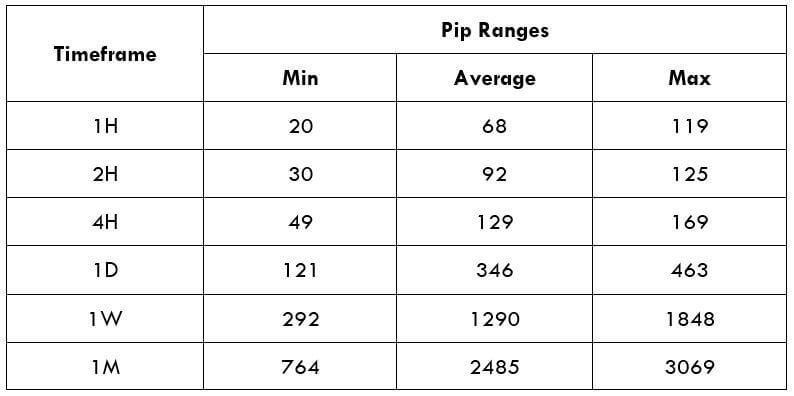
Procedure to assess Pip Ranges
- Add the ATR indicator to your chart
- Set the period to 1
- Add a 200-period SMA to this indicator
- Shrink the chart so you can assess a large time period
- Select your desired timeframe
- Measure the floor level and set this value as the min
- Measure the level of the 200-period SMA and set this as the average
- Measure the peak levels and set this as Max.
NZD/DKK Cost as a Percent of the Trading Range
The cost of trade primarily varies on the broker and fluctuates based on the volatility of the market. This is for the reason that the total cost includes Slippage and spreads apart after the trading fee. Following is the description of the cost variation in terms of percentages. The knowledge of it is discussed in the subsequent sections for ECN and STP accounts.
ECN Model Account
Spread = 15 | Slippage = 5 |Trading fee = 8
Total cost = Slippage + Spread + Trading Fee = 5 + 15 + 8 = 28
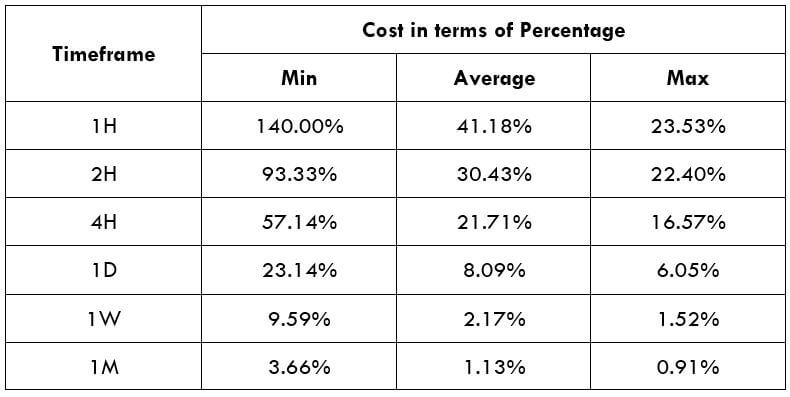
STP Model Account
Spread = 20 | Slippage = 5 | Trading fee = 0
Total cost = Slippage + Spread + Trading Fee = 5 + 20 + 0 = 25
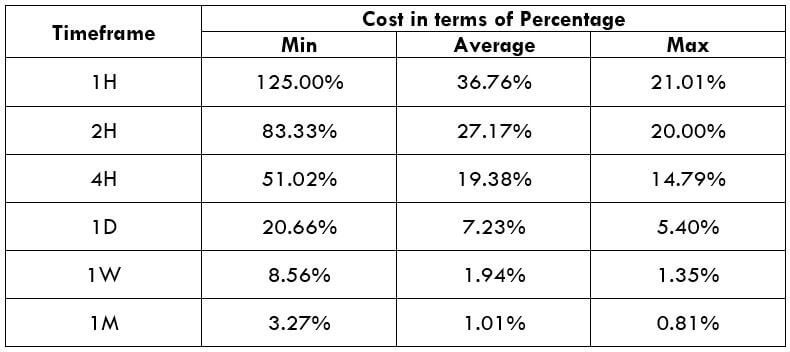
The Ideal way to trade the NZD/DKK
The NZD/DKK is an exotic currency pair, and the volatility in this pair is moderate. As seen in the range table above, the average pip movement on the 1hour time frame is 68. We must know that the cost of trade declines as the volatility of the pair increases. But this should not be held as an advantage because it is unsafe to trade high volatile markets as the prices rise and fall swiftly.
For instance, in the 1-hour timeframe, the maximum pip range value in this pair is 119 pips, and the minimum pip range value is 20 pips. When we compare the fees for both the pip movements, we find that for 20 pip movement fees is 140.00%, and for a 119 pip movement, the fess is only 23.53%.
So, we can substantiate that the prices are more significant for low volatile markets and high for extremely volatile markets. Hence, we must constantly try to make our entries and exits when the volatility is minimum or average than to that of maximum values. But if your preference is certainly towards decreasing your trading costs, you can trade when the market’s volatility is near the maximum values with optimal risk management.

